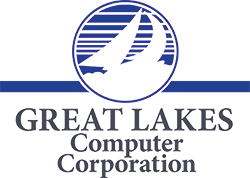[vc_row][vc_column][vc_column_text]
 It’s no mystery that a server is considered to be the most important business machine for offices. Even though servers have multiple configurations and functions, the most common feature among small business servers is data storage. These servers act as a central location for users in need of frequently accessing stored data. Because this access must occur quickly and efficiently in order for businesses to perform smoothly, regular maintenance must occur to ensure the servers are functioning the way they should. In order to prevent servers from crashing, follow these essential tips on server repair and maintenance. Otherwise, your business may experience a crash and come to a hault, with days or weeks of expensive repair needed, and critical data could be gone for good.
It’s no mystery that a server is considered to be the most important business machine for offices. Even though servers have multiple configurations and functions, the most common feature among small business servers is data storage. These servers act as a central location for users in need of frequently accessing stored data. Because this access must occur quickly and efficiently in order for businesses to perform smoothly, regular maintenance must occur to ensure the servers are functioning the way they should. In order to prevent servers from crashing, follow these essential tips on server repair and maintenance. Otherwise, your business may experience a crash and come to a hault, with days or weeks of expensive repair needed, and critical data could be gone for good.
Essential tips on server repair and maintenance:
-
- Set up a schedule for maintenance: Rather than waiting for a problem to occur, set up a schedule on your business’s calendar and make sure it’s adhered to on the scheduled days. If instead you wait for a problem to occur, you risk losing all of your data from a burned out server. Create this schedule with your business’s needs in mind so nothing critical is disrupted and the flow of business is not compromised. Use this time to clean the server air intake and fans, use a vacuum and / or canned air to remove the dust and dirt. Clean your tape drive with cleaning tapes. These simple steps will help extend the life of your equipment and keep you running trouble-free.
- REBOOT your server and make sure your critical patches are up to date: As part of scheduled maintenance, make sure your software patches are installed and the server is re-booted. Pay special attention to all messages that appear on the screen during this post process. They can be particularly helpful in troubleshooting a problem.
- Don’t forget to back up your data: Most small businesses operate with one server, so having your data properly backed-up is critical. If you’re using tape to back up your data, have at least a 7 tape rotation to ensure proper versioning and prevent excessive tape wear. If you are using a disk-to-disk backup process, make sure you have multiple disks and swap out regularly.
- Install anti-virus software: It’s not a good idea to run an unsecure server, so be sure to install anti-virus software. Purchase tough anti-virus software programs – not the free-ware – so you’re providing the best possible security. Following installation of the anti-virus software, ensure all updates for the program are performed as soon as they’re available to you.
- “An ounce of prevention is worth a pound of cure” – Remember that old saying? Well, it’s as true today as ever. If your server doesn’t have redundant power supplies or a disk array that is fault tolerant, you will want to consult with an IT professional to see if those features are available. The truth is that server components WILL fail at some time in the future, so redundancy simply makes that equipment failure a little less painful and a lot easier (and quicker) to recover from.
With proper planning and scheduling, server maintenance is not difficult or scary. Make every attempt to plan ahead, and be sure to work with professionals at all times. The decision process should be as meticulous as hiring individuals to run your business, because without proper server repair and maintenance, your business will not run efficiently. Conduct interviews, gather references, and compare prices. Don’t be afraid to ask too many questions – there is no such thing when it comes to running your business. That way, you’re getting the most options and the best possible services your business’s budget allows.
FIND OUT WHERE YOU STAND by scheduling a FREE Risk Assessment. This is a no-obligation diagnostic of your system, where you will learn what weaknesses and vulnerabilities may exist that can be exposing your business to server crash and/or data loss. The biggest risk in NOT knowing how your SYSTEM may be at risk. Click this link to schedule your assessment now – before disaster strikes.

[/vc_column_text][/vc_column][/vc_row]
